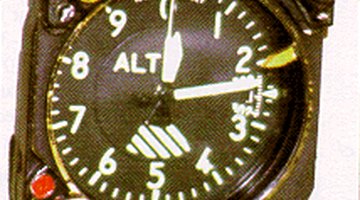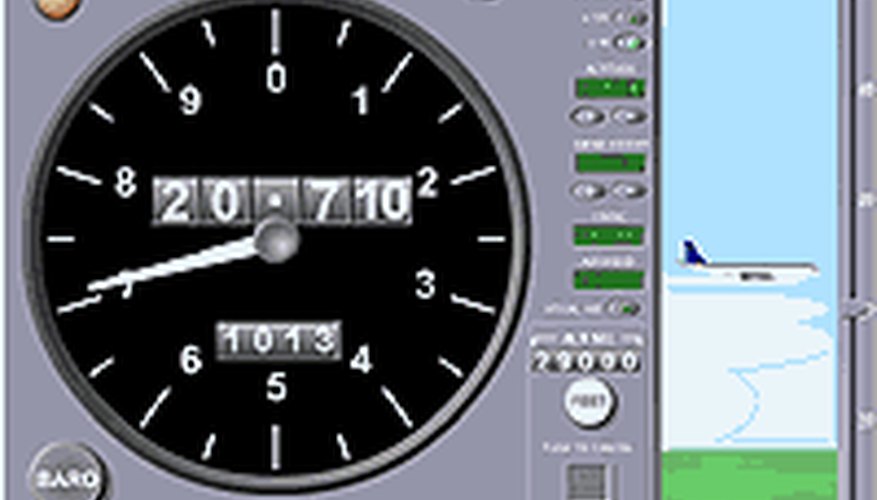Servo altimeters have a place among the most important instrument gauges in aviation history. The servo altimeter tells the pilot how high the plane is flying above the earth and at what rate it is climbing or descending, along with valuable information about the air pressure. The instrument differs from a normal altimeter in how it senses the altitude. A traditional altimeter uses only a barometer-style system to calculate pressure. Its instrument panel is sealed with an airtight connection to the aeroplane's static port, a device on the side of the plane open to a steady and reliable stream of air.
As the plane rises and falls, air pressure with the traditional altimeter's system changes inversely, and a type of barometer, usually a sealed aneroid barometer, detects the change. Its movements or readings are then translated to a reading on the altimeter, either in a simple dial or digitally as a computer readout (many aeroplanes use both).
However, there are difficulties with this traditional type of altimeter. Air pressure readings can be misleading, because they change based on where the plane is on the earth, whether it is on land or on water, what the temperature is and what the height of land above sea level is. There are calculations to compensate for each one of these changes, but before servo altimeters, they were relegated to separate readouts or even left up to the pilot to calculate.
Servo Altimeter Mechanics

A servo altimeter solves this problem with a two-mode altimeter controlled by a switch. The pilot flips the switch between servo mode and static mode. The static mode is a function of the traditional altimeter system and is set as the standby option, which the plane switches back to whenever it comes back online. This mode is fine when flying at a steady height, but it cannot keep up with rapid changes made by the plane. When going through sudden shifts in altitude, such as taking off and landing, the pilot switches to servo mode.
- A servo altimeter solves this problem with a two-mode altimeter controlled by a switch.
- The static mode is a function of the traditional altimeter system and is set as the standby option, which the plane switches back to whenever it comes back online.
Simply, the servo mode of the system takes the traditional altimeter readings and combines them with data from the plane's other sensors, applying the necessary calculation automatically and showing the pilot the calculated altitude based on these factors. While the servo part is very accurate, it does not sense the air pressure manually, but depends on accurate data. While some servo systems display these readings via the gauge, they traditionally use the computer LCD display.
Alternate Servo Altimeters
Servo altimeters not only compensate for traditional altimeters, but for all types of altitude readouts that cannot keep up with sudden changes made by aircraft. Radar altimeters, which use radio waves to judge the aeroplane's height, also incorporate servo systems as part of their calculations.
Servo altimeters are being replaced or incorporated into more advanced systems known as "central air computers," which take inputs from a variety of sources to give the pilot information, such as air pressure and altitude, and automatically adjust for the situation.
